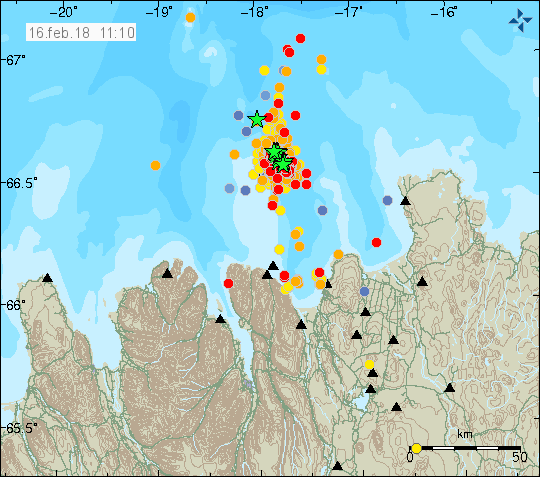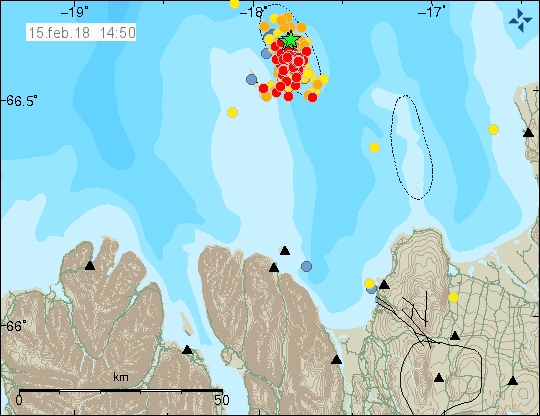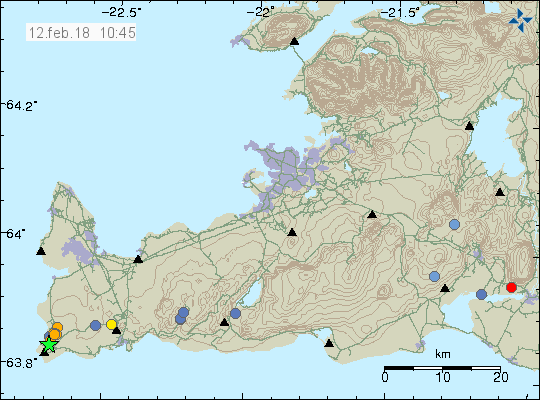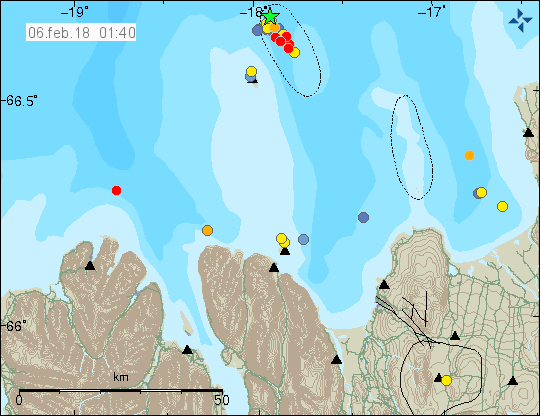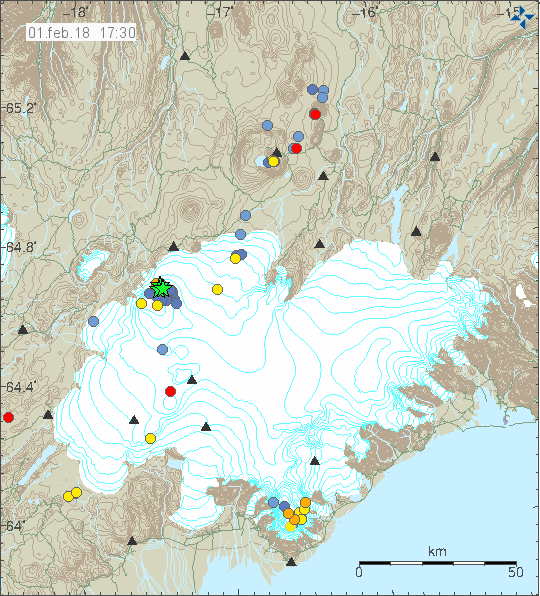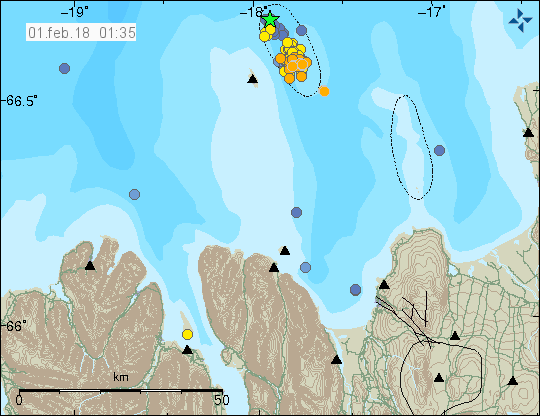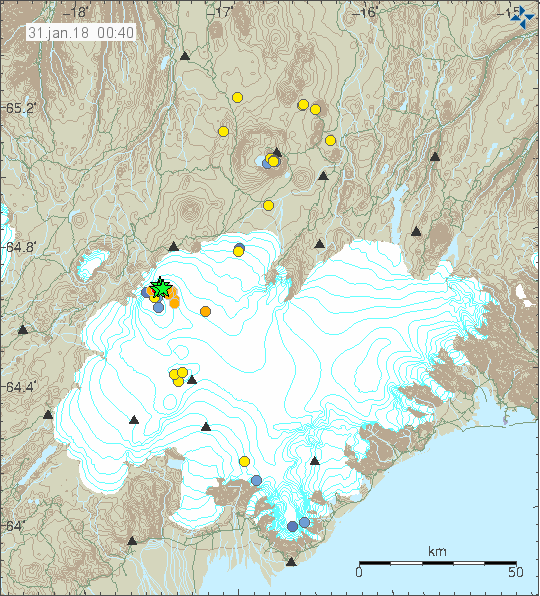Information in this article are going to go outdated quickly.
As of the writing of this article total of 1593 earthquakes have happened in last 48 hours in Tjörnes Fracture Zone (TFZ). The reason for this earthquake swarm remains unclear at the moment. It is not clear if this is just tectonic earthquakes or have their origins in magma movements.
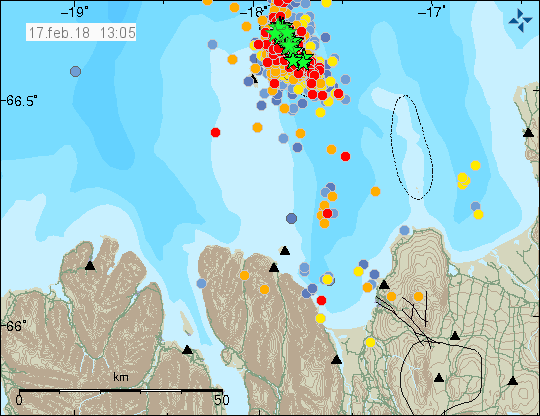
The earthquake swarm in Tjörnes Fracture Zone. Copyright of this image belongs to Icelandic Met Office.

This earthquake swarm is dense. Copyright of this image belongs to Icelandic Met Office.
Largest earthquake since midnight has the magnitude of 3,7 so far. In the last 48 hours total of 27 earthquakes larger than magnitude 3,0 have happened east of Grímsey island. This earthquake swarm is happening in a volcano named Nafir (no GVP profile) and that volcano doesn’t have any documented eruption during the last 12.000 years that I know of (I might be wrong). It remains unclear at the moment if an eruption is going to happen at this location. At the moment there are no clear signs of magma movement, but ISOR (Icelandic article here) suggests that current earthquake swarm might be connected to magma movement in the area. If that is going to result in a eruption remains unclear in ISOR view.
I’ll update this article as needed today.

